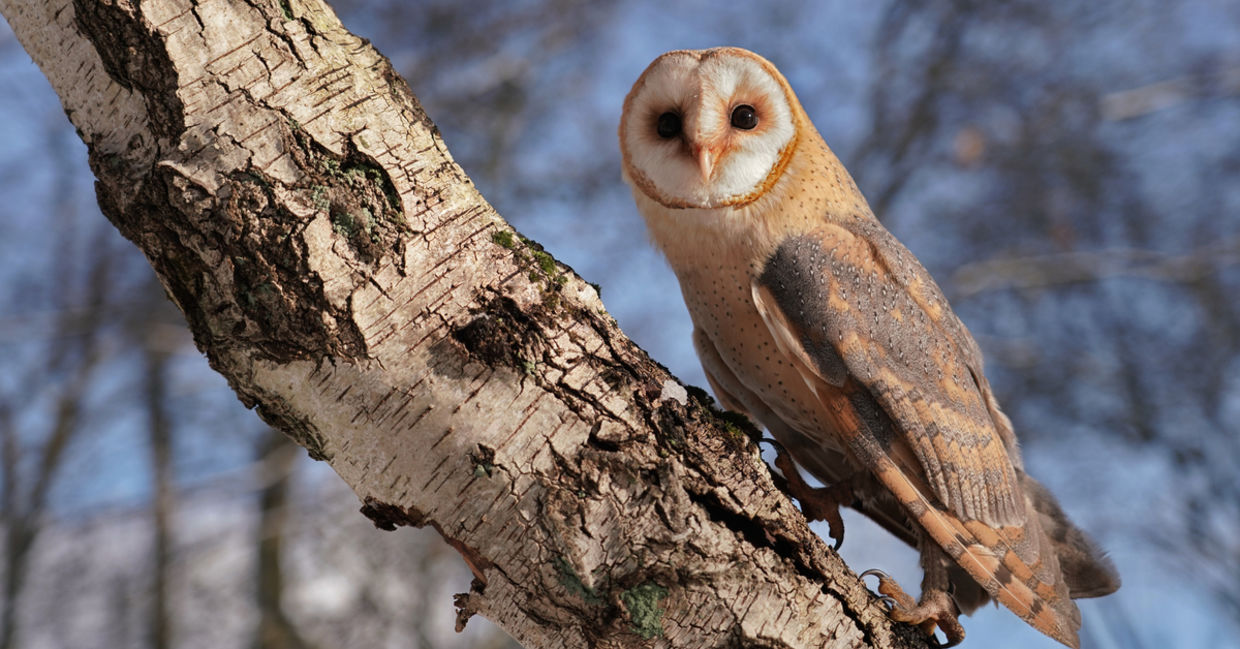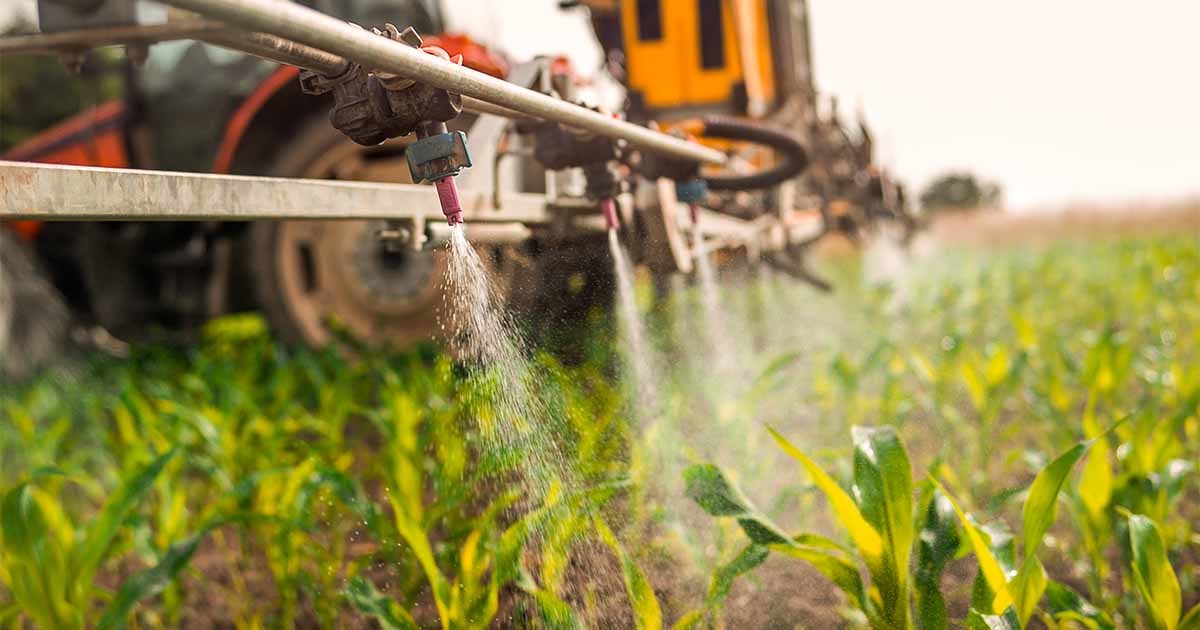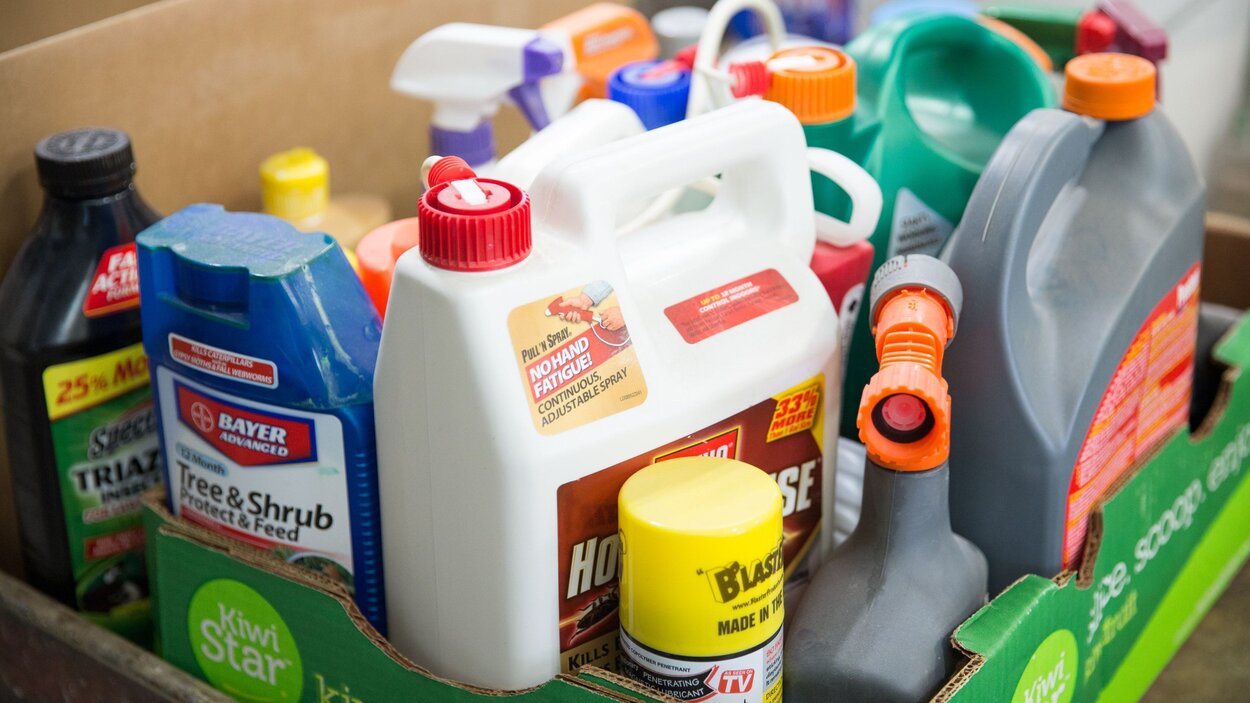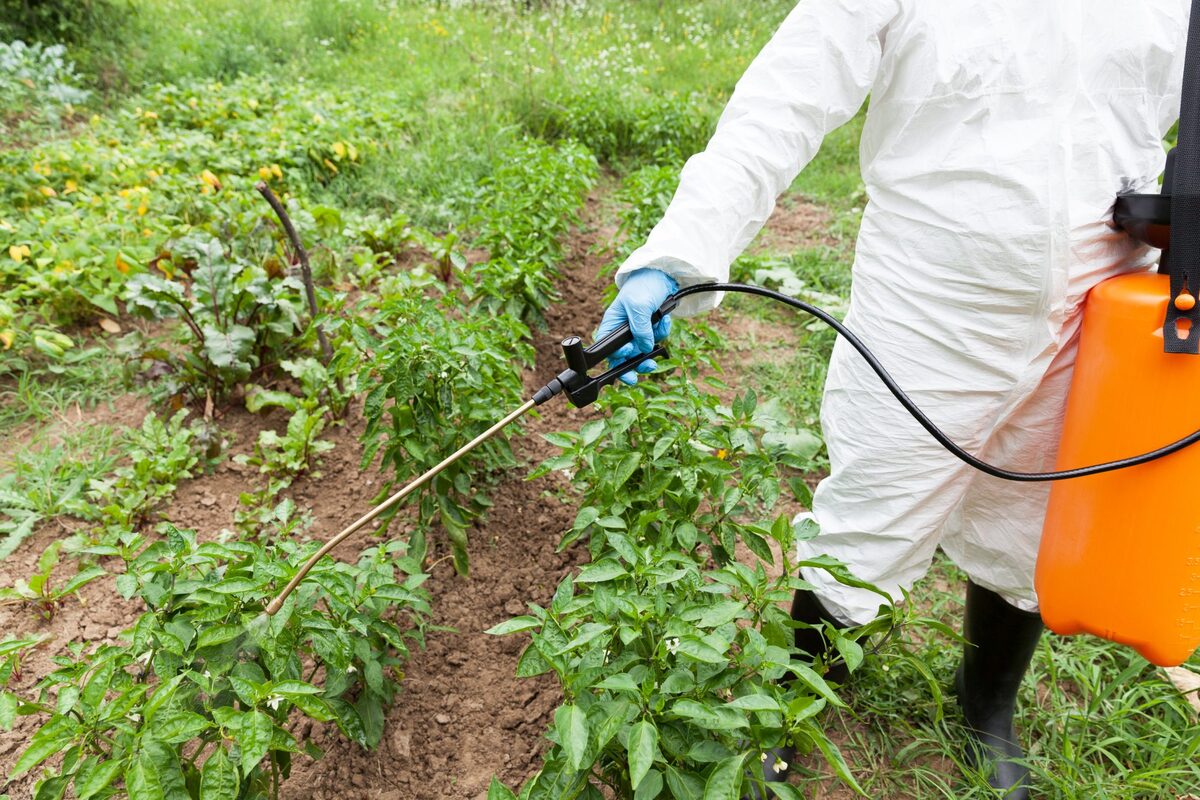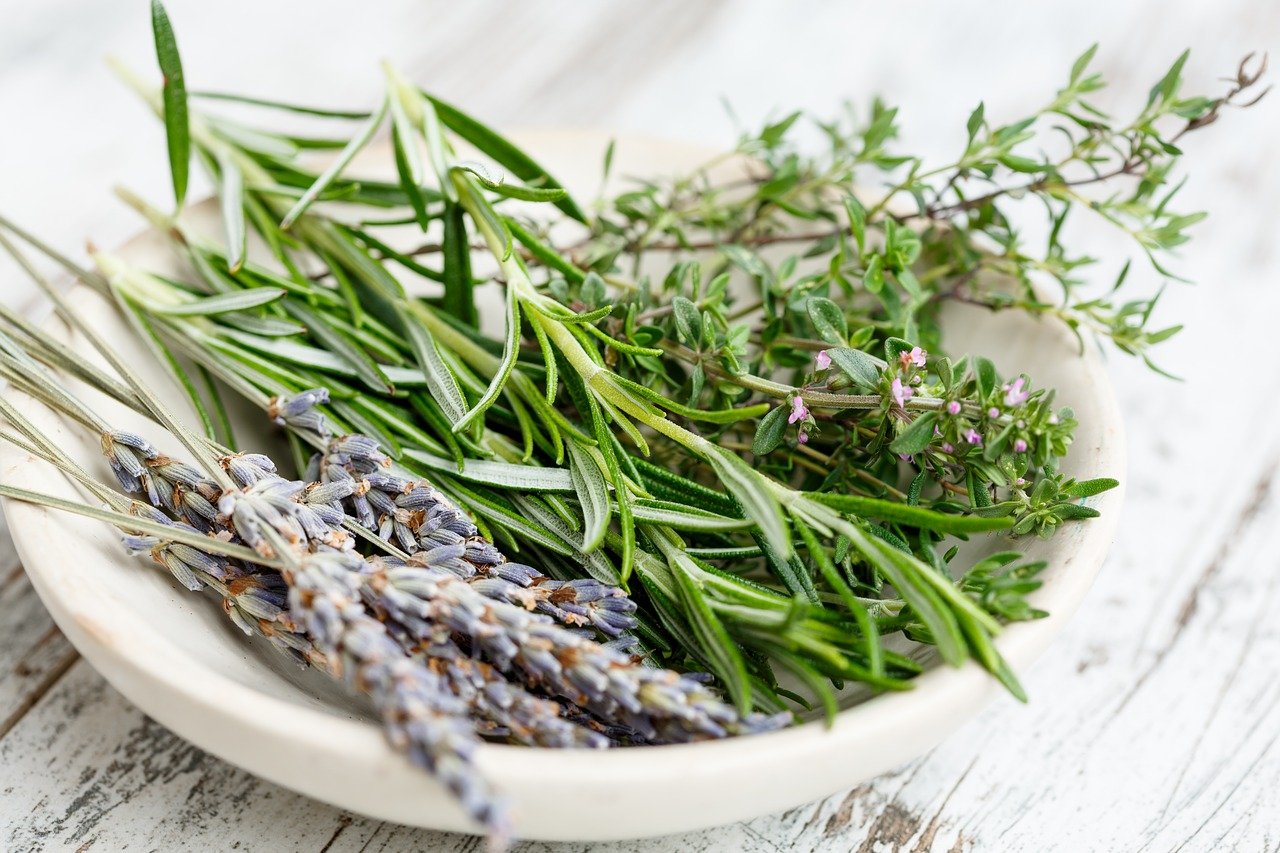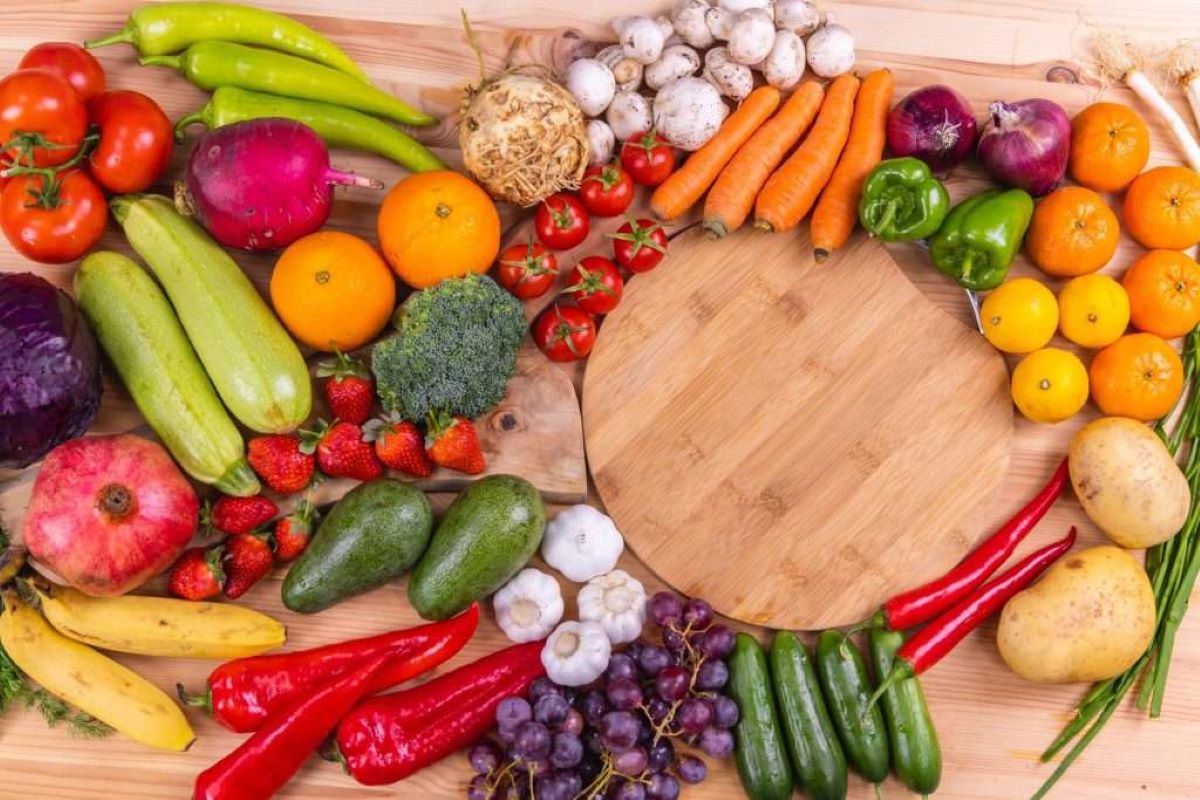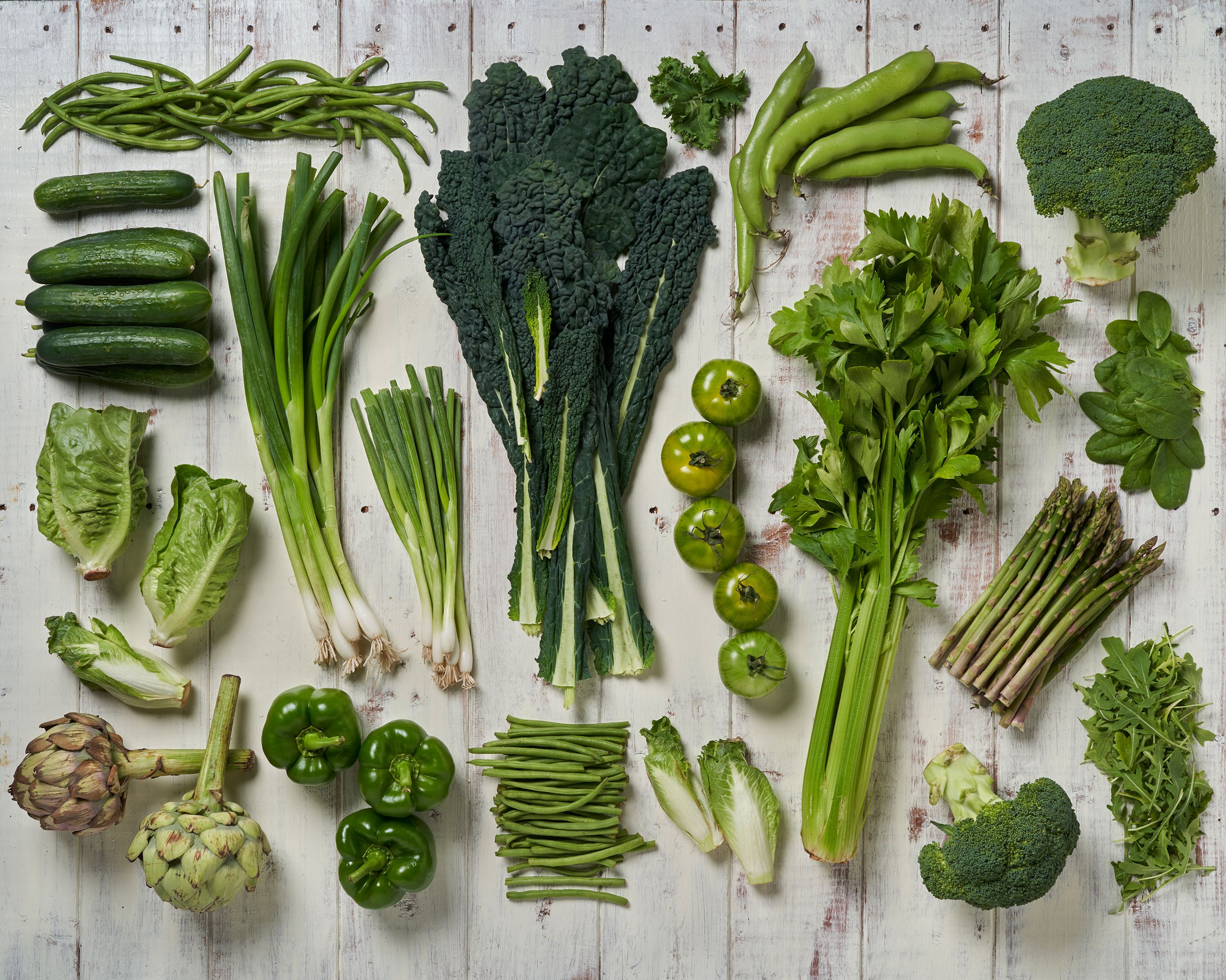Home>Gardening News and Trends>Latest News>Why Pesticides Are Good
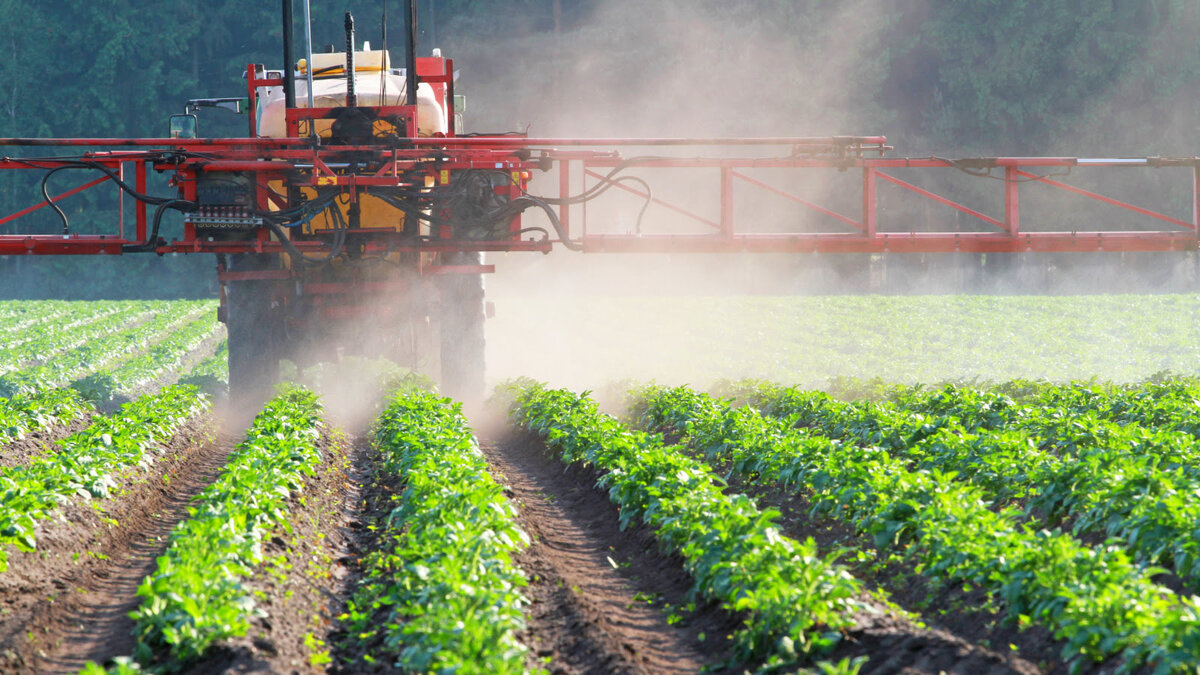

Latest News
Why Pesticides Are Good
Published: November 27, 2023
Discover the Latest News on Why Pesticides Are Good and Stay Informed on the Benefits and Controversies Surrounding Their Use.
(Many of the links in this article redirect to a specific reviewed product. Your purchase of these products through affiliate links helps to generate commission for Chicagolandgardening.com, at no extra cost. Learn more)
Table of Contents
Introduction
Pesticides play a crucial role in modern agriculture and are a key component of sustainable farming practices. These chemical substances are specifically designed to control and eliminate pests, weeds, and diseases that can damage crops and reduce yields. While pesticides have been a subject of debate due to concerns about their impact on the environment and human health, it is important to recognize the numerous benefits that they provide.
From increasing crop yield to protecting against pests and diseases, pesticides have become an essential tool for farmers worldwide. Additionally, they contribute to the reduction of post-harvest losses and the preservation of public health by minimizing the risk of foodborne illnesses. However, it is important to acknowledge the environmental impact of these substances and recognize the significance of proper regulation and safety measures.
Throughout this article, we will delve deeper into the benefits of pesticides and their role in modern agriculture. We will also discuss the environmental impact of these substances and the measures that are in place to ensure their safe and responsible use.
Definition of Pesticides
Pesticides are chemical substances or biological agents that are used to control, mitigate or eradicate pests, weeds, and diseases that can harm crops and agricultural production. They are designed to target specific pests and pathogens while minimizing harm to humans, animals, and the environment.
There are several categories of pesticides, including insecticides, herbicides, fungicides, and rodenticides. Each category is formulated to target a specific type of pest or weed, ensuring efficient pest control while maintaining the integrity of the crops.
Insecticides are pesticides that are used to control and eliminate insect pests. They can be applied to crops through sprays, dusts, or other formulations. Insecticides work by interfering with the nervous system of the insects, resulting in their death or prevention of reproduction.
Herbicides, on the other hand, are pesticides used to control and eliminate unwanted plants, commonly known as weeds. Herbicides can be selective, targeting specific types of weeds while leaving the desired crops unharmed, or non-selective, eliminating all vegetation in a particular area.
Fungicides are pesticides used to control fungal diseases that can damage crops and reduce yield. They inhibit the growth and reproduction of fungi and can be applied to crops as sprays or dusts.
Rodenticides are pesticides used to control rodent populations that can cause significant damage to crops and transmit diseases. These substances are formulated to attract and kill rodents effectively.
It is important to note that the use of pesticides is regulated by various national and international bodies to ensure their safe and responsible use. These regulations include guidelines for proper application and handling, as well as restrictions on the use of certain pesticides to protect human health and the environment.
Benefits of Pesticides
Pesticides offer a range of benefits that contribute to the productivity and sustainability of agricultural practices. These benefits include increased crop yield, protection against pests and diseases, reduction of post-harvest losses, and preservation of public health.
One of the primary benefits of pesticides is their ability to increase crop yield. By controlling pests and diseases, pesticides prevent damage to crops, ensuring that a greater portion of the harvest is viable for consumption or sale. This increased yield is essential for meeting the growing demand for food as the global population continues to rise.
Pesticides also play a crucial role in protecting crops from pests and diseases. Insects, weeds, and pathogens can quickly spread and cause significant damage to agricultural production. By applying pesticides at the right time and in the proper amounts, farmers can effectively manage and control these threats, minimizing crop losses and preserving the quality of the harvest.
Furthermore, pesticides help reduce post-harvest losses. After fruits, vegetables, and grains are harvested, they are vulnerable to spoilage and deterioration caused by pests, molds, and fungal infections. By using pesticides during storage and transportation, farmers can extend the shelf life of their produce, reducing the amount of food waste and ensuring a higher percentage of edible crops reach consumers.
In addition, pesticides contribute to the preservation of public health. Certain pests, such as mosquitoes and rodents, are vectors for diseases such as malaria, dengue fever, and Hantavirus. By controlling the population of these disease-carrying pests, pesticides help prevent the spread of these illnesses and protect human health.
Despite these benefits, it is important to use pesticides responsibly and in accordance with applicable regulations and safety measures. The improper use or overuse of pesticides can lead to environmental contamination and unintended harm to non-target organisms. Striking the right balance between pest control and minimizing negative impacts is crucial to ensure the sustainability and long-term effectiveness of pesticide use in agriculture.
Increased Crop Yield
Pesticides play a vital role in increasing crop yield, ensuring a steady and abundant food supply to meet the growing demands of the global population. By effectively managing pests, weeds, and diseases, pesticides help to safeguard crops and enhance their productivity.
One of the primary reasons for using pesticides is to control insect pests that can cause extensive damage to crops. Insects, such as aphids, caterpillars, and beetles, can feed on plant leaves, stems, fruits, and roots, leading to reduced plant growth, lower crop yields, and even complete crop failures. By applying insecticides when pest populations reach a critical level, farmers can effectively prevent or minimize the damage caused by these pests, ensuring healthier and more productive crops.
In addition to insect pests, weeds also pose a significant threat to crop yield. Weeds compete with crops for vital resources, such as sunlight, water, and nutrients. If left unchecked, weeds can outgrow and smother crops, reducing their growth and yield. Herbicides are valuable tools in controlling and eradicating weeds, allowing crops to access the necessary resources and thrive. Furthermore, herbicides can be selective, targeting weeds without harming the desired crops, providing an efficient and environmentally-friendly option for weed control.
Another factor that can negatively impact crop yield is the presence of diseases caused by pathogens, such as fungi, bacteria, and viruses. These diseases can spread rapidly, leading to significant damage and yield losses. Fungicides, bactericides, and other disease-targeting pesticides help manage and control the spread of these pathogens, reducing the occurrence and severity of diseases in crops and promoting healthier plants and higher yields.
Overall, by effectively managing pest insect populations, controlling weed infestations, and mitigating the spread of diseases, pesticides help to maximize crop yield. This increased yield not only helps meet the demands of a growing population but also contributes to food security and economic stability in agricultural communities.
However, it is essential to note that while pesticides are effective in increasing crop yield, their use should be balanced with sustainable farming practices and the conservation of natural resources. Implementing integrated pest management strategies, crop rotation, and the use of biological controls can complement pesticide use, reducing reliance on chemicals and promoting long-term agricultural sustainability.
Protection against Pests and Diseases
Pesticides play a crucial role in protecting crops against pests and diseases, ensuring healthy and robust plants that can thrive and produce optimal yields. By effectively managing pest populations and controlling the spread of diseases, pesticides help farmers safeguard their crops and maintain a stable and reliable food supply.
One of the primary benefits of pesticides is their ability to control insect pests. Insects can quickly infest crops, causing widespread damage and reducing yields. For instance, pests like aphids, beetles, and caterpillars can devour plant leaves, feed on fruits, and bore into plant stems, leading to stunted growth and yield losses. By using insecticides, farmers can effectively target and eliminate these pests, preventing or minimizing their detrimental impact on crops.
In addition to insects, diseases caused by pathogens, such as fungi, bacteria, and viruses, pose significant threats to crop health and productivity. These diseases can spread rapidly through fields, infecting plants and impacting their growth and yield. Fungicides, bactericides, and other disease-targeting pesticides are essential tools in controlling and mitigating the spread of these pathogens, helping to prevent or reduce the occurrence and severity of plant diseases. This, in turn, promotes healthier crops with improved yields.
Furthermore, pesticides are essential for controlling the spread of weeds. Weeds not only compete with crops for vital resources like sunlight, water, and nutrients but also serve as hosts for pests and diseases. This can result in increased pest pressure and disease transmission, further jeopardizing crop health and yield potential. Herbicides play a crucial role in managing and eradicating weeds, helping to minimize their impact on crop health and productivity. By suppressing weed growth and development, herbicides allow crops to access essential resources and nutrients, ensuring their optimum growth and yield potential.
By effectively managing pest populations, controlling the spread of diseases, and suppressing weed growth, pesticides provide vital protection to crops, promoting healthier plants and higher yields. This protection not only ensures a steady supply of high-quality produce but also contributes to food security and economic stability by reducing potential losses due to pests and diseases.
However, it is important to note that while pesticides are an important tool in crop protection, they should be used judiciously and in accordance with recommended practices. Integrated pest management (IPM) strategies, which involve a combination of cultural, biological, and chemical control methods, can help minimize pesticide use while maintaining effective pest and disease control. Additionally, adherence to pesticide application guidelines and consideration of environmental and health impacts are vital to ensure the safe and responsible use of pesticides in agriculture.
Reduction of Post-Harvest Losses
Pesticides play a crucial role in reducing post-harvest losses, ensuring that a larger portion of the harvested crops can be utilized for consumption and commercial purposes. By protecting stored produce from pests, molds, and fungi, pesticides contribute to extending the shelf life of agricultural products and reducing food waste.
After crops are harvested, they are vulnerable to spoilage and damage caused by a variety of factors, including pests and microorganisms. Insects, rodents, and other pests can infest storage facilities and contaminate the stored crops, leading to significant losses in quality and quantity. Fumigating storage areas with appropriate pesticides effectively eliminates these pests, safeguarding the integrity of the stored crops and preserving their market value.
Furthermore, molds and fungi can thrive in stored crops, leading to the growth of toxins and the risk of mycotoxin contamination. Mycotoxins, produced by certain fungi, can have detrimental effects on human and animal health, and they can cause the rejection of entire batches of stored agricultural products. Fungicides play a crucial role in preventing the growth of molds and fungi, reducing the risk of mycotoxin contamination and ensuring the safety and quality of stored crops.
Pesticides not only protect against pests and fungal growth but also help prevent post-harvest losses caused by physical damage. Certain pests, such as fruit flies and beetles, can cause mechanical damage to stored fruits and vegetables, making them more prone to spoilage. By effectively managing these pests, pesticides contribute to maintaining the structural integrity of crops, reducing losses due to physical damage.
This reduction in post-harvest losses has significant economic implications. By preserving the quality and quantity of stored crops, pesticides help farmers and growers maximize their returns and reduce financial losses. Additionally, it contributes to food security by ensuring a larger portion of the harvested crops reach consumers, mitigating the need for additional agricultural production to meet demands.
While pesticides play a vital role in reducing post-harvest losses, it is important to note that proper handling and storage practices are also crucial. Maintaining appropriate temperature and humidity conditions, regularly monitoring stored crops, and practicing good hygiene in storage facilities are essential to complement pesticide use and optimize post-harvest preservation methods.
Preservation of Public Health
Pesticides play a significant role in the preservation of public health by minimizing the risks associated with pests and the diseases they can transmit. By effectively controlling vectors, such as mosquitoes and rodents, and reducing the prevalence of disease-carrying pests, pesticides contribute to the protection and well-being of communities.
One of the most notable contributions of pesticides to public health is their role in controlling mosquito populations. Mosquitoes are vectors for several infectious diseases, including malaria, dengue fever, Zika virus, and West Nile virus. These diseases can cause significant illness and death, particularly in tropical and subtropical regions. Insecticides, when used in mosquito control programs, effectively target and reduce mosquito populations, minimizing the transmission of these devastating diseases to humans.
Additionally, pesticides play a vital role in controlling other disease-carrying pests, such as ticks and fleas. These pests can transmit diseases like Lyme disease, typhus, and various types of encephalitis. By effectively managing these pests, pesticides help prevent the spread of these diseases, protecting public health and reducing the burden on healthcare systems.
Pesticides also contribute to the protection of public health by controlling rodent populations. Rats and mice are known carriers of diseases, including leptospirosis, hantavirus, and salmonellosis. These diseases can be transmitted to humans through contact with rodent droppings, urine, or bites. Rodenticides, when strategically applied, help control and reduce rodent populations, minimizing the risk of disease transmission and enhancing public health and safety.
Furthermore, pesticides are used in the protection of stored food and crops to prevent contamination and the growth of mycotoxins. Mycotoxins, produced by certain fungi, can have adverse effects on human health, including liver damage, immune system suppression, and cancer. By preventing fungal growth in stored crops, pesticides help maintain the safety and quality of food, reducing the risk of mycotoxin contamination and associated health hazards.
While pesticides play a crucial role in preserving public health, it is important to ensure their responsible use. Adhering to appropriate pesticide application guidelines, handling pesticides safely, and considering potential environmental impacts are essential for maximizing the benefits of pesticide use while minimizing potential risks. Additionally, integrated pest management (IPM) strategies, which focus on preventive measures and the use of a combination of control methods, can help reduce reliance on pesticides and promote sustainable pest management practices.
Environmental Impact of Pesticides
Pesticides, while providing benefits in agricultural production, can also have an impact on the environment. It is important to recognize and address these potential effects to ensure the sustainable and responsible use of these chemical substances.
One of the main environmental concerns associated with pesticides is their potential for toxicity to non-target organisms. Pesticides do not only affect the target pests but can also harm beneficial insects, birds, and other wildlife. For example, some insecticides designed to control specific insect pests may unintentionally affect pollinators such as bees and butterflies, leading to potential disruptions in ecosystem balance and biodiversity loss. To mitigate these risks, it is important to use pesticides selectively and employ strategies such as timing application to minimize contact with non-target species.
Pesticides, particularly herbicides, can also have unintended consequences on plants and ecosystems. Herbicides designed to control weeds can inadvertently affect non-target plant species, including native plants and vegetation vital for biodiversity. This can lead to the disruption of natural habitats, loss of plant diversity, and potential consequences for other organisms that rely on these plants for food or shelter. Careful consideration of application methods and choosing the appropriate herbicides can help minimize these impacts.
Furthermore, pesticide use can contribute to the contamination of soil, water, and air. When pesticides are applied, they can leach into the soil and potentially contaminate groundwater. Surface runoff can carry pesticides into nearby water bodies, potentially affecting aquatic organisms and ecosystems. Additionally, certain particles or vapors from pesticide application can become airborne and contribute to air pollution. Proper application techniques, such as using buffer zones and following labeled instructions, can help mitigate these risks and minimize pesticide movement into the environment.
Recognizing the potential for environmental impacts, regulatory bodies and organizations have developed guidelines and regulations to ensure the safe and responsible use of pesticides. These regulations often govern the registration, sale, and use of pesticides, and impose restrictions on certain chemicals with significant environmental concerns. Integrated pest management (IPM) strategies, which incorporate biological and cultural control methods, are also promoted as alternatives to reduce reliance on pesticides and minimize their environmental impact. By adopting IPM practices and adhering to regulations and guidelines, farmers and growers can reduce potential harm to the environment and promote sustainable agricultural practices.
It is essential to continually evaluate and improve pesticide technologies, seeking innovative approaches that minimize potential risks to the environment. By balancing the benefits of pesticides with environmental considerations and responsible use, we can mitigate the potential environmental impacts and work towards a more sustainable and resilient agricultural system.
Regulation and Safety Measures
Recognizing the potential risks and impacts associated with pesticide use, regulatory bodies and organizations have established stringent guidelines and safety measures to ensure the responsible and safe use of these chemical substances.
Regulation of pesticides varies from country to country but generally includes requirements for pesticide registration, labeling, and authorized uses. Before a pesticide can be sold and used, it must undergo a rigorous evaluation process to determine its efficacy and safety. This evaluation includes comprehensive testing for potential adverse effects on human health and the environment. Pesticides that pass these evaluations are granted registration, and their labels provide vital information on proper handling, application rates, safety precautions, and restrictions to protect human health and the environment.
Safety measures are essential to protect those who handle and apply pesticides, as well as the workers who work in treated areas. These measures often include the use of personal protective equipment (PPE) such as masks, gloves, and protective clothing to reduce exposure to the chemicals. Additionally, training programs and educational campaigns help promote awareness and proper handling techniques to minimize potential risks.
Furthermore, integrated pest management (IPM) strategies have gained prominence as an alternative approach to minimize the reliance on pesticides. IPM focuses on preventive measures such as crop rotation, resistant plant varieties, biological controls, and cultural practices to manage pests and diseases. By incorporating multiple control methods and minimizing pesticide use, IPM aims to reduce the potential risks to human health and the environment while maintaining effective pest management.
Continuous monitoring and research are vital to assess the effectiveness and safety of pesticides on an ongoing basis. This includes evaluating emerging technologies, studying potential alternative pest control methods, and assessing the long-term ecological impacts of pesticide use. By staying informed and embracing new scientific advancements, regulatory bodies and farmers can make informed decisions regarding the use of pesticides, ensuring the protection of human health and the environment.
Environmental stewardship and sustainability are key considerations in pesticide regulation and safety measures. International agreements and collaborations seek to promote responsible pesticide use, minimize the environmental impact, and protect vulnerable ecosystems. These initiatives aim to balance the need for pest control with the preservation of biodiversity, water quality, and overall ecosystem health.
By adhering to stringent regulations, implementing safety measures, promoting IPM strategies, and fostering ongoing research, we can enhance the responsible use of pesticides and minimize potential risks. Collaboration between regulators, farmers, researchers, and other stakeholders is crucial to continuously improve pesticide management practices, ensuring the long-term sustainability of agriculture and the protection of human health and the environment.
Conclusion
Pesticides play a significant role in modern agriculture, providing numerous benefits such as increased crop yield, protection against pests and diseases, reduction of post-harvest losses, and the preservation of public health. These chemical substances have revolutionized farming practices, enabling farmers to meet the demands of a growing population and ensure a steady and reliable food supply.
By effectively controlling pests, such as insects, weeds, and disease-causing pathogens, pesticides help safeguard crops and maximize their productivity. Insecticides target pests that can cause extensive damage to crops, herbicides control weeds that compete for resources, and fungicides mitigate the spread of fungal diseases. Their application at the right time and in the proper amounts enables farmers to maintain healthy crops and achieve higher yields.
Additionally, pesticides contribute to the reduction of post-harvest losses by controlling pests, such as insects and rodents, that can infest stored crops. Fungicides also prevent fungal growth and the production of harmful mycotoxins, ensuring the safety and quality of stored food. This reduction in losses not only benefits farmers economically but also contributes to food security and reduces waste.
Furthermore, pesticides play a critical role in the protection of public health by controlling disease-carrying pests, such as mosquitoes and rodents. By reducing their populations, pesticides help minimize the transmission of diseases, protecting the well-being of communities worldwide. Moreover, adherence to safety measures and proper handling ensures the protection of farmers and workers who handle these substances.
While the benefits of pesticides are evident, it is crucial to carefully consider their environmental impact. Regulations, safety measures, and continuous research help minimize potential risks and promote responsible pesticide use. Integrated pest management strategies, with an emphasis on prevention and alternative control methods, offer sustainable approaches to manage pests while minimizing reliance on pesticides.
Overall, pesticides are valuable tools that contribute to the productivity, sustainability, and safety of modern agriculture. Through responsible and informed use, we can harness their benefits while minimizing potential risks. It is essential to foster ongoing collaboration between regulators, farmers, researchers, and other stakeholders to ensure the continued improvement of pesticide management practices, promoting a balanced approach that integrates the needs of agriculture, public health, and the environment.

